Abstract
The relationship between specific growth rate of Escherichia coli and the concentration of limiting nutrient (glucose or phosphate or tryptophan) has been determined for populations in a steady state. At high concentrations the specific growth rate is independent of the concentration of nutrient, but at low concentrations the specific growth rate is a strong function of the nutrient concentration. Such a relationship was predicted by Monod; however, Monod's equation does not predict the relationship over the entire range of nutrient concentration. If parameters of the equation are estimated from the results obtained at low concentrations, then at high concentrations of nutrient, the specific growth rate is significantly higher than that predicted by Monod's equation. These results were interpreted on the basis that the rate of growth is controlled by at least two parallel reactions and that the affinities of the enzymes catalyzing these reactions are different. The relationship between specific growth rate and mean cell volume was also measured, and the results indicate that mean cell volume depends not only on the specific growth rate but also on the nature of the limiting nutrient. There are different mean cell volumes at the same specific growth rate established by different limiting nutrients. Therefore, the mean cell volume is not uniquely determined by the specific growth rate.
Full text
PDF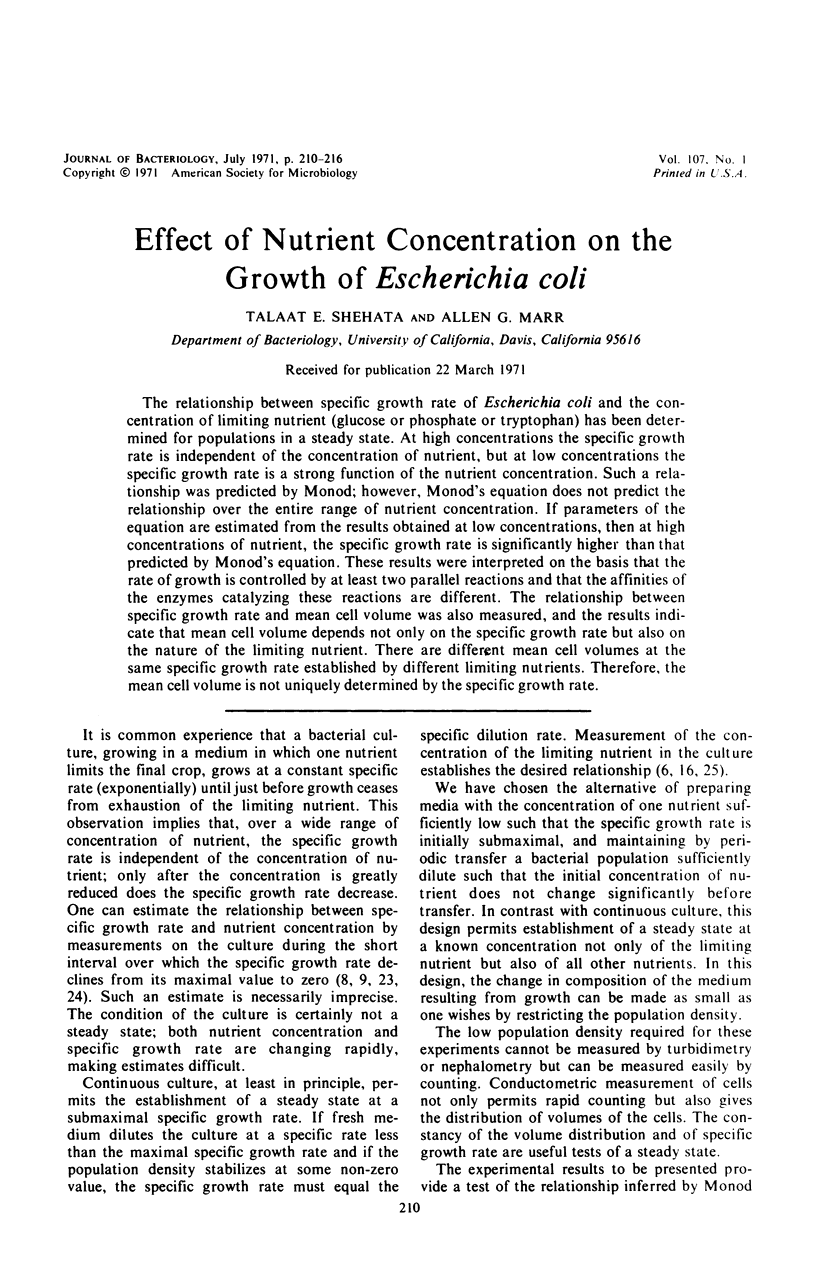
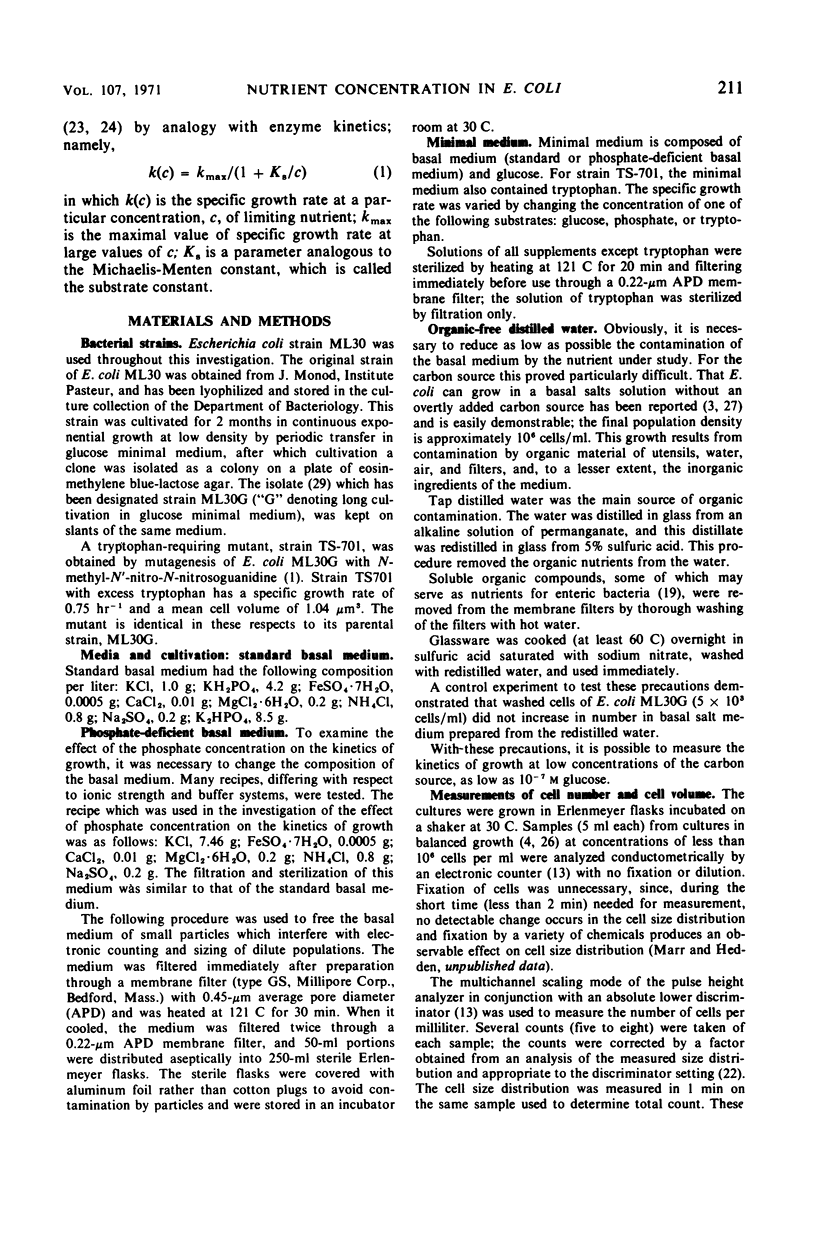
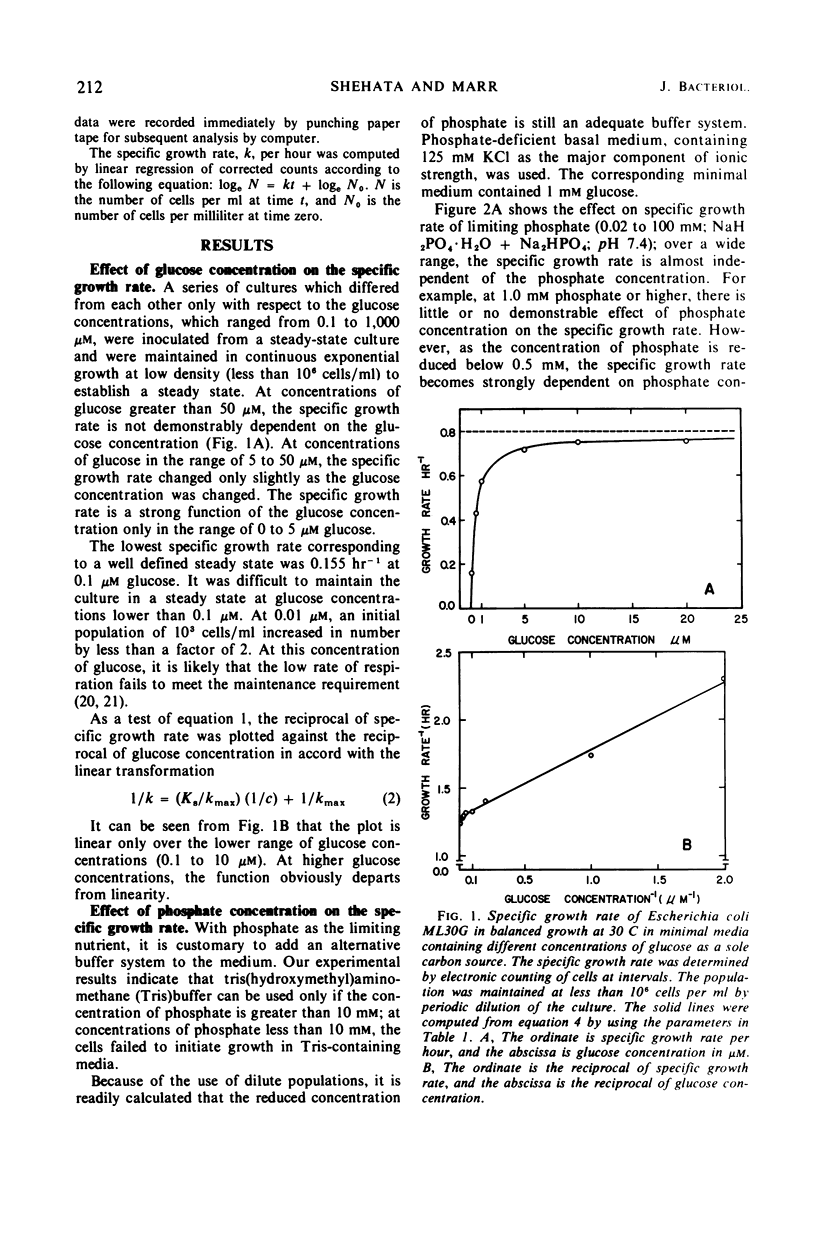
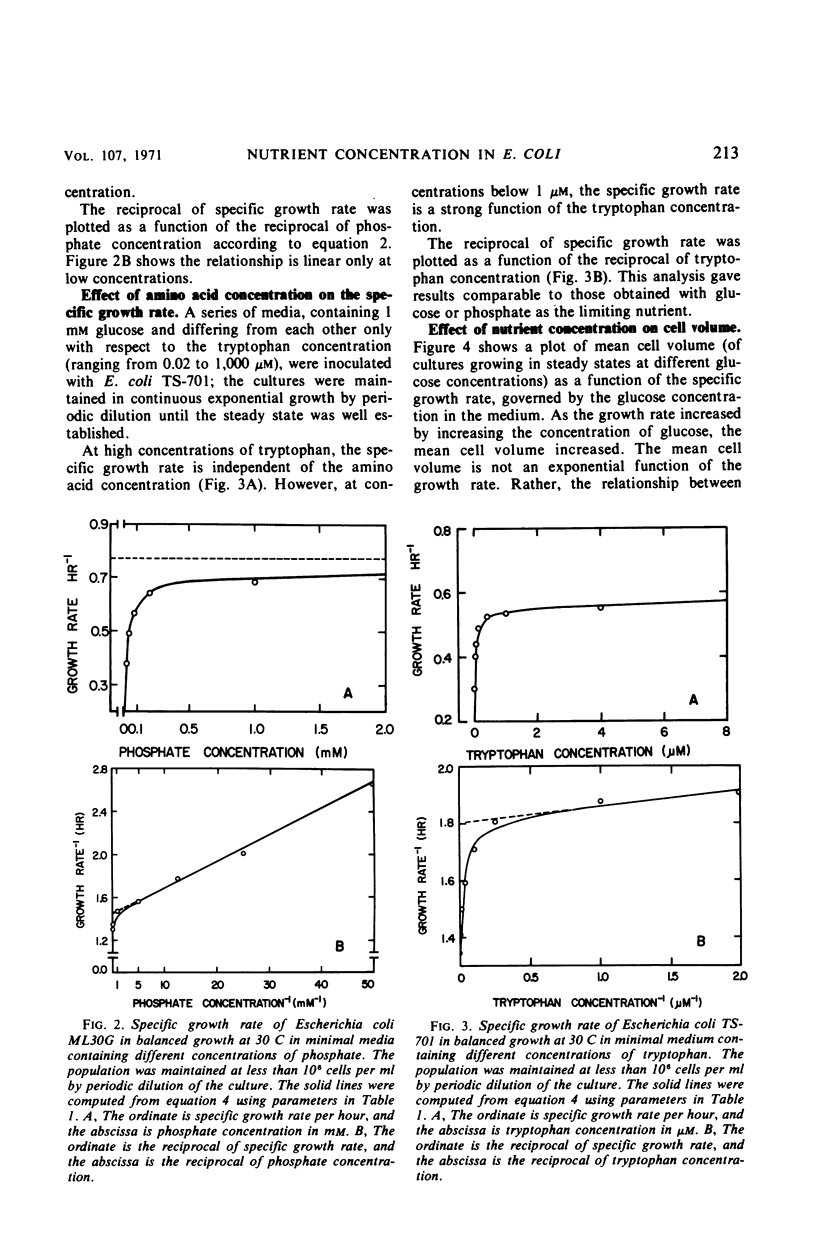
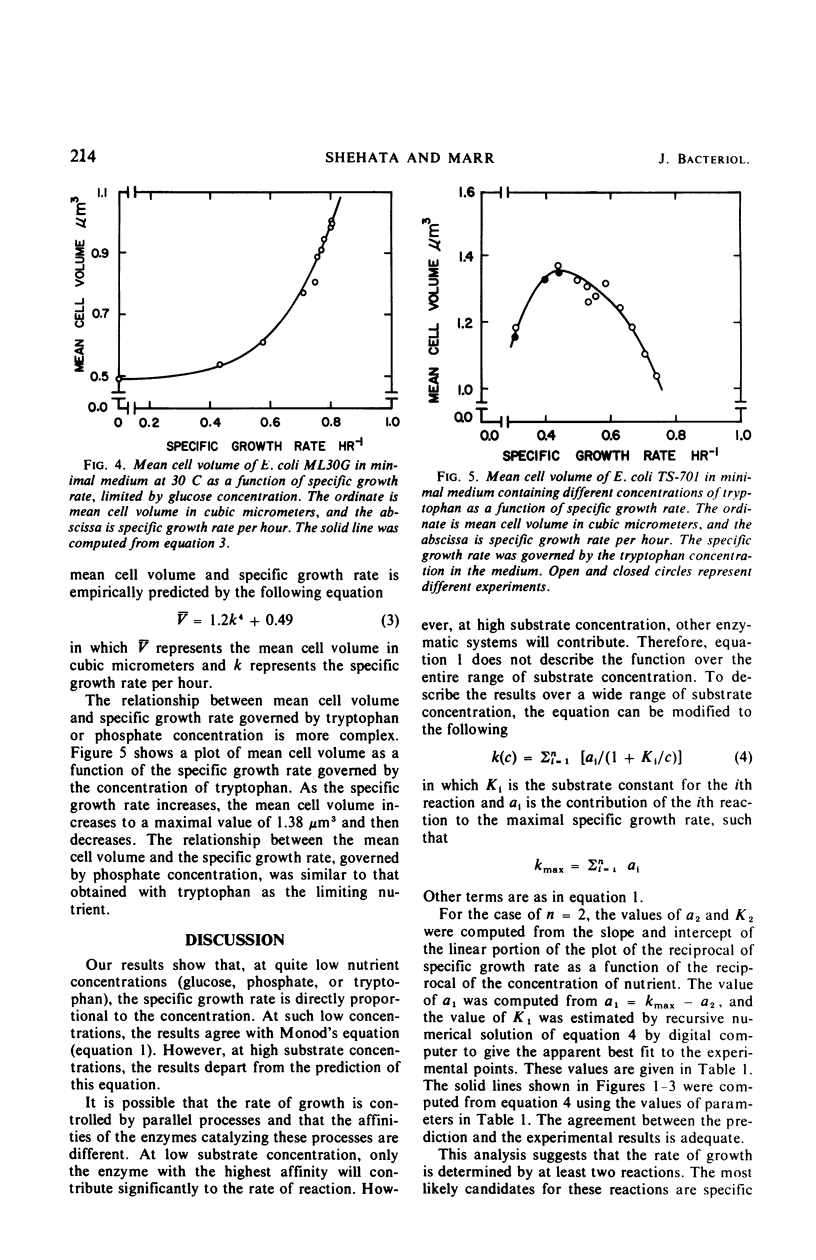
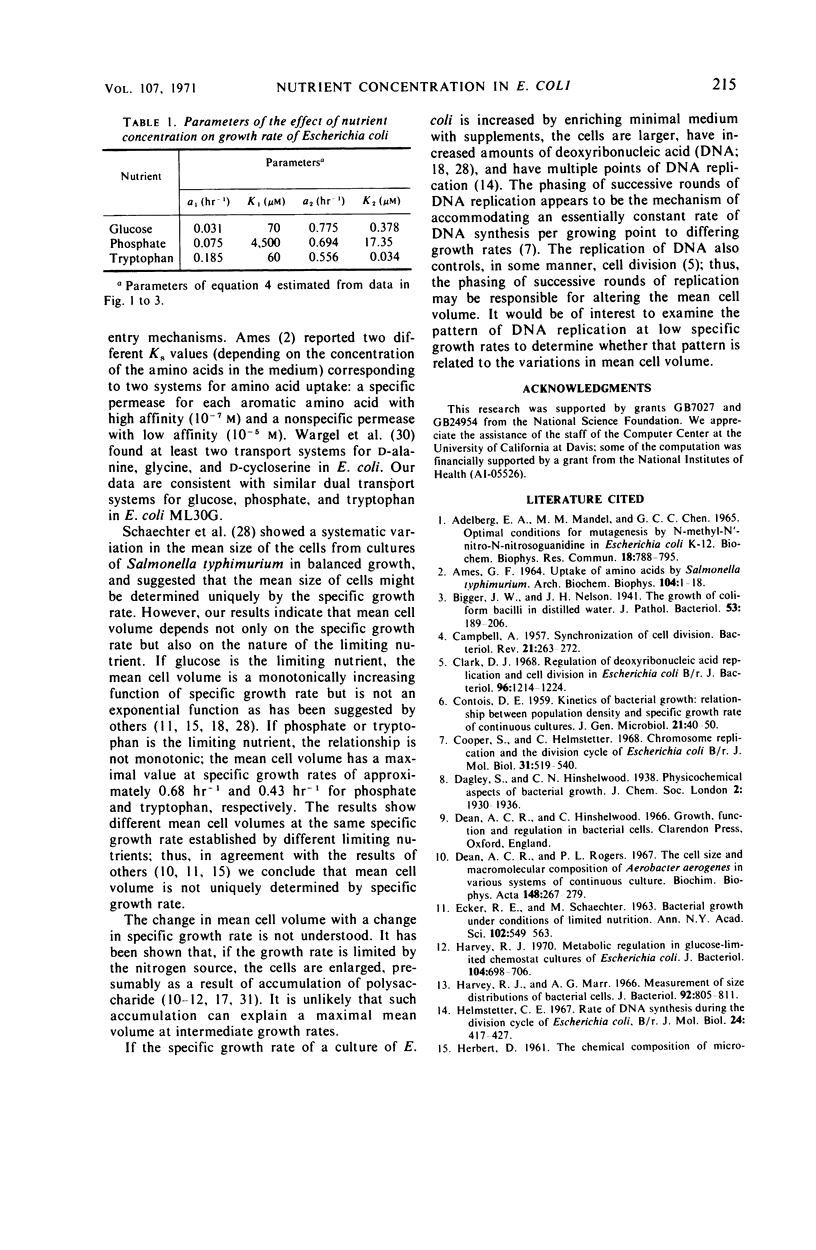
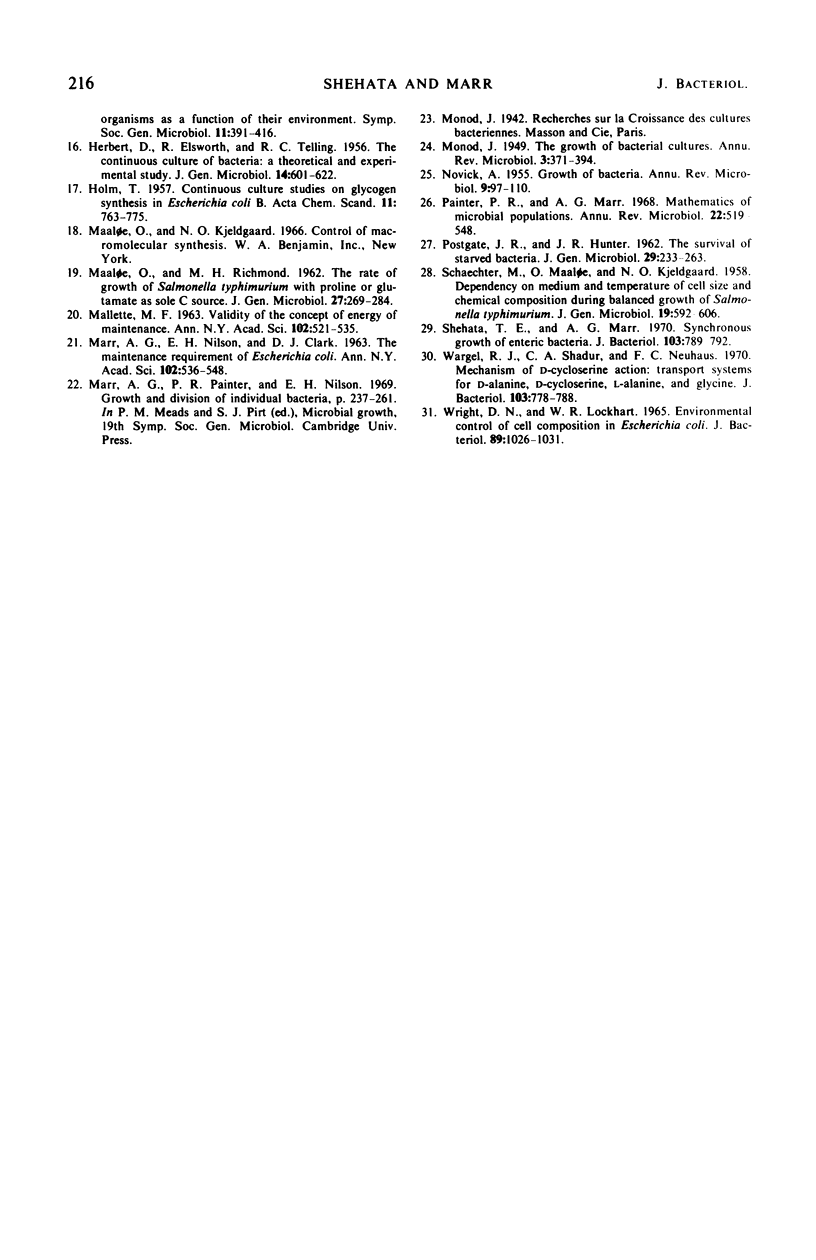
Selected References
These references are in PubMed. This may not be the complete list of references from this article.
- AMES G. F. UPTAKE OF AMINO ACIDS BY SALMONELLA TYPHIMURIUM. Arch Biochem Biophys. 1964 Jan;104:1–18. doi: 10.1016/s0003-9861(64)80028-x. [DOI] [PubMed] [Google Scholar]
- CAMPBELL A. Synchronization of cell division. Bacteriol Rev. 1957 Dec;21(4):263–272. doi: 10.1128/br.21.4.263-272.1957. [DOI] [PMC free article] [PubMed] [Google Scholar]
- CONTOIS D. E. Kinetics of bacterial growth: relationship between population density and specific growth rate of continuous cultures. J Gen Microbiol. 1959 Aug;21:40–50. doi: 10.1099/00221287-21-1-40. [DOI] [PubMed] [Google Scholar]
- Clark D. J. Regulation of deoxyribonucleic acid replication and cell division in Escherichia coli B-r. J Bacteriol. 1968 Oct;96(4):1214–1224. doi: 10.1128/jb.96.4.1214-1224.1968. [DOI] [PMC free article] [PubMed] [Google Scholar]
- Cooper S., Helmstetter C. E. Chromosome replication and the division cycle of Escherichia coli B/r. J Mol Biol. 1968 Feb 14;31(3):519–540. doi: 10.1016/0022-2836(68)90425-7. [DOI] [PubMed] [Google Scholar]
- Dean A. C., Rogers P. L. The cell size and macromolecular composition of Aerobacter aerogenes in various systems of continuous culture. Biochim Biophys Acta. 1967 Oct 9;148(1):267–279. doi: 10.1016/0304-4165(67)90302-9. [DOI] [PubMed] [Google Scholar]
- HERBERT D., ELSWORTH R., TELLING R. C. The continuous culture of bacteria; a theoretical and experimental study. J Gen Microbiol. 1956 Jul;14(3):601–622. doi: 10.1099/00221287-14-3-601. [DOI] [PubMed] [Google Scholar]
- Harvey R. J., Marr A. G. Measurement of size distributions of bacterial cells. J Bacteriol. 1966 Oct;92(4):805–811. doi: 10.1128/jb.92.4.805-811.1966. [DOI] [PMC free article] [PubMed] [Google Scholar]
- Harvey R. J. Metabolic regulation in glucose-limited chemostat cultures of Escherichia coli. J Bacteriol. 1970 Nov;104(2):698–706. doi: 10.1128/jb.104.2.698-706.1970. [DOI] [PMC free article] [PubMed] [Google Scholar]
- MAALOE O., RICHMOND M. H. The rate of growth of Salmonella typhimurium with proline or glutamate as sole C source. J Gen Microbiol. 1962 Feb;27:269–284. doi: 10.1099/00221287-27-2-269. [DOI] [PubMed] [Google Scholar]
- MALLETTE M. F. Validity of the concept of energy of maintenance. Ann N Y Acad Sci. 1963 Jan 21;102:521–535. doi: 10.1111/j.1749-6632.1963.tb13658.x. [DOI] [PubMed] [Google Scholar]
- POSTGATE J. R., HUNTER J. R. The survival of starved bacteria. J Gen Microbiol. 1962 Oct;29:233–263. doi: 10.1099/00221287-29-2-233. [DOI] [PubMed] [Google Scholar]
- Painter P. R., Marr A. G. Mathematics of microbial populations. Annu Rev Microbiol. 1968;22:519–548. doi: 10.1146/annurev.mi.22.100168.002511. [DOI] [PubMed] [Google Scholar]
- SCHAECHTER M., MAALOE O., KJELDGAARD N. O. Dependency on medium and temperature of cell size and chemical composition during balanced grown of Salmonella typhimurium. J Gen Microbiol. 1958 Dec;19(3):592–606. doi: 10.1099/00221287-19-3-592. [DOI] [PubMed] [Google Scholar]
- Shehata T. E., Marr A. G. Synchronous growth of enteric bacteria. J Bacteriol. 1970 Sep;103(3):789–792. doi: 10.1128/jb.103.3.789-792.1970. [DOI] [PMC free article] [PubMed] [Google Scholar]
- WRIGHT D. N., LOCKHART W. R. ENVIRONMENTAL CONTROL OF CELL COMPOSITION IN ESCHERICHIA COLI. J Bacteriol. 1965 Apr;89:1026–1031. doi: 10.1128/jb.89.4.1026-1031.1965. [DOI] [PMC free article] [PubMed] [Google Scholar]
- Wargel R. J., Shadur C. A., Neuhaus F. C. Mechanism of D-cycloserine action: transport systems for D-alanine, D-cycloserine, L-alanine, and glycine. J Bacteriol. 1970 Sep;103(3):778–788. doi: 10.1128/jb.103.3.778-788.1970. [DOI] [PMC free article] [PubMed] [Google Scholar]


